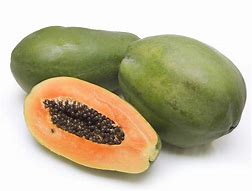
Papain – The Packaged Enzyme
In recent travels to Bangladesh, I became reacquainted with one of the national fruits, papaya (Carica papaya). This tropical fruit contains delicious, colorful, luscious interior pulp that yields a wonderful texture and incredible health benefits. An average size papaya provides a welter-weight portion of nutrients, including a fiber-filled package with prominent levels of antioxidant vitamins A, C and E. The taste is sweet, but the fruit is low in calories, fat content and cholesterol. That should be enough pedigree for any self-respecting fruit. The taste and nutritional advantages are just the start. Papaya has been used for centuries in many areas to treat and prevent medical conditions. The papaya enzyme, termed papain, has numerous applications for ailments and has been used in tribal medicine for centuries. Papain is used for wound healing, reducing external scar tissue, and has antimicrobial and anti-inflammatory properties. It offers analgesic action to ease muscle discomfort due to overexertion and other stress-induced trauma. Study results support the benefit of papain in digestive health. Current papaya medical research provides promise in treating Pancreatic Deficiency. Investigators are also following encouraging paths towards improving joint disorders and heart conditions with papaya components. Weight loss and diabetic support do not even mark the end of the list of benefits offered by this fruit.
Originally from Central America, the papaya and its seeds were distributed to other areas by explorers. The introduction of this delicious fruit has benefited humanity with a useful, and juicy, medicine chest.